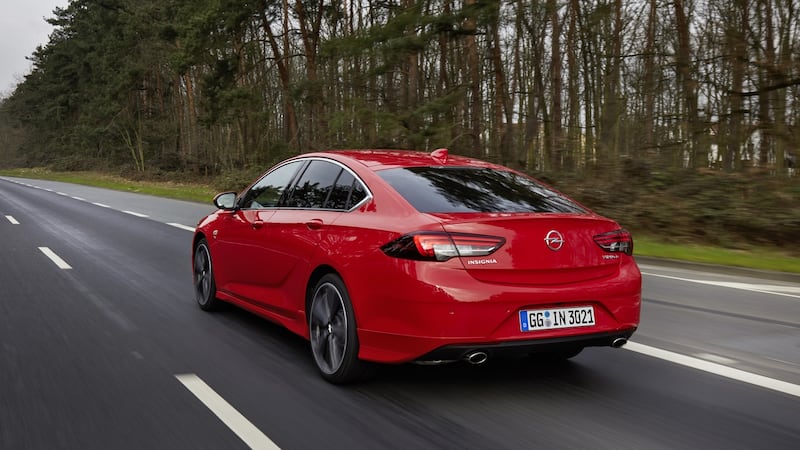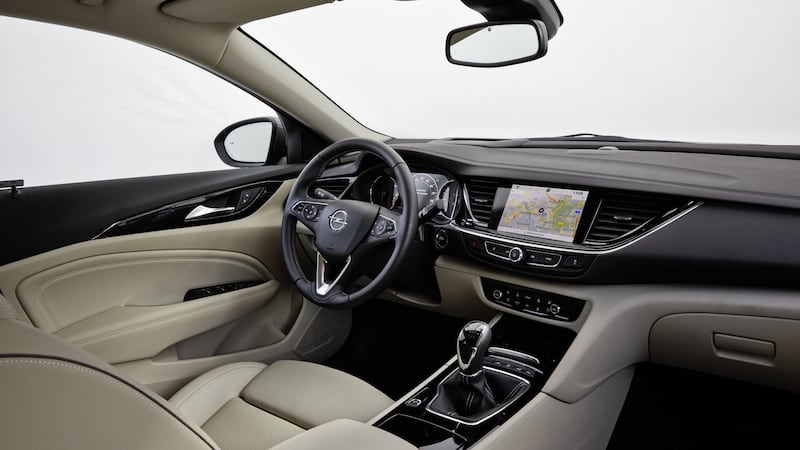Opel engineers are very open to criticism, it would appear. The outgoing Insignia was an award-winner, yet it had its flaws. It was big on the outside yet cramped inside. The driver sat on the car's chassis rather than in it, which meant you never really felt engaged in the handling. This wasn't helped by the fact that the car was quite heavy.
Finally, the dash seemed like it was the result of an explosion at a button factory. A 1980s Boeing 747 had fewer buttons and switches in its cockpit.
Well, the new Insignia addresses each and every one of these complaints. The car is now sleeker in profile and certainly less imposing than the current Mondeo, while being noticeably more spacious – and less cluttered – inside.


The weight savings are also very impressive, with up to 175kg being shed on a like-for-like comparison. That has major benefits across the board. The car handles better and fuel economy is improved, but so is the performance thanks to a much better power-to-weight ratio.
In the petrol version for example, each bhp has to move 1kg less than before. You don’t need to be Stephen Hawking to know that sort of maths matters when you are trying to move a lump of metal.
The range is good and the prices better. The 1.5l petrol starts at €27,350 and entry-level cars come with a very credible array of kit. Here is just a flavour of the standard features on entry models: air-conditioning, cruise control, leather steering wheel with multi-function controls, 7in Intellilink colour touchscreen, Bluetooth with Apple CarPlay/Android Auto; a raft of safety systems including emergency collision avoidance and pedestrian protection; and Opel's OnStar personal assistant with wifi connection for up to seven devices.
On-call assistance
The OnStar system, which is something most people don’t realise is available on modern cars these days, is a bit of a gem. It’s one of those features you probably think is a gimmick until you start using it and then you can’t imagine life without it.
Basically it’s a 24-hour on-call assistance – and from a human being, not a silly automated system – that can help you with everything from accident assistance to finding a parking spot. Push a button and you are immediately connected to a call centre where the person on the line will be able to load addresses into your car’s satnav, make a hotel reservation for you or even find a nearby car park with vacant spaces and then load that address into the satnav.
It also has major safety advantages, as it means help is available at the touch of a button in case of trouble. The service is free for the first 12 months and if you wish to continue, it’s either €9.95 per month or €99.50 for an annual subscription.
As regards to the specifications, there are four grades in total. For €2,000 more you go from entry SC to SRI or SE depending on your tastes. The SRI adds front and rear parking sensors and more comfortable seats. The SE adds a rear spoiler and sports front seats.
Both come with a larger 8in touchscreen and in-built navigation. Given that you can use your phone for navigation via CarPlay or Android Auto, I don’t see the point. There would also not be enough there to tempt me to make the extra spend on specification over entry level. At €31,595 you get the range-topping Elite version. In all instances the money would seem to be better spent on getting the best engine for your needs.
Fuel consumption
The 1.5-litre petrol engine is a reworking of the same engine block that’s in the 1.4-litre Astra. Here it delivers 140bhp and a decent 250Nm of torque. That’s more than its similarly sized rivals, while it also boasts an impressive fuel consumption of 5.7 l/100km with emissions of 129g/km.
In the diesel range there are three options: a 1.6-litre with a lacklustre 110bhp or more useful 136bhp, and a punchy 2-litre 170bhp. The 110bhp starts at €29,350 and there’s €1,000 difference in the price between the 110bhp and 136bhp 1.6-litre diesel, but the latter is the one to choose.
The 2-litre diesel starts at €33,850 in mid-range specification. It’s also available with the firm’s new eight-speed automatic transmission, but that costs an extra €2,200. Given that I still find the six-speed manual gearbox quite woolly, it might be one to consider for those who clock up a lot of mileage.
Those same long-distance drivers may appreciate the extra effort Opel has put into its seats and the seating position. Opel took on board criticisms of the outgoing version, in particular the way you seemed to sit on the car rather than in it. Some nifty design tricks mean you are more engaged in the car, with the driver sitting 30mm lower in the car.
That has meant the roofline could be lowered by 28mm as well, giving the car a more coupe silhouette. They managed this without compromising on headroom, which remains the same but somehow creating an extra 8mm in the rear. Kudos to the designers for seemingly defying the laws of physics.
Driving appeal
The qualms I have are small. The steering wheel seems a bit too large for a car that’s meant to have dynamic driving appeal. The manual gearbox needs to feel more mechanical and precise. Finally adding Grand Sport and Sports Tourer to the name of the saloon and estate is just plain silly. After that Opel is on to a winner.
The only problem then is the Insignia’s timing. The first model arrived just as the world went into recession. New cars were not on anyone’s priority list. The new model arrives in better economic climes, but buyers are turning their back on traditional saloons in favour of SUVs and crossovers. Comparing sales figures for 2007 and today, regular saloons such as the Insignia, Mondeo and Passat are down nearly70 per cent, while crossover SUV sales are up 194 per cent.
The Insignia certainly gives its established rivals a run for their money and with the right engine is a match for any of them. The problem, however, is that the motoring landscape is rapidly changing and family saloons are quickly falling out of favour.
What may save the Insignia is that it looks more like a coupe than a traditional three-box saloon. The Germans certainly hope that’s the case, for they badly need a win to prove their worth to their new owners.












